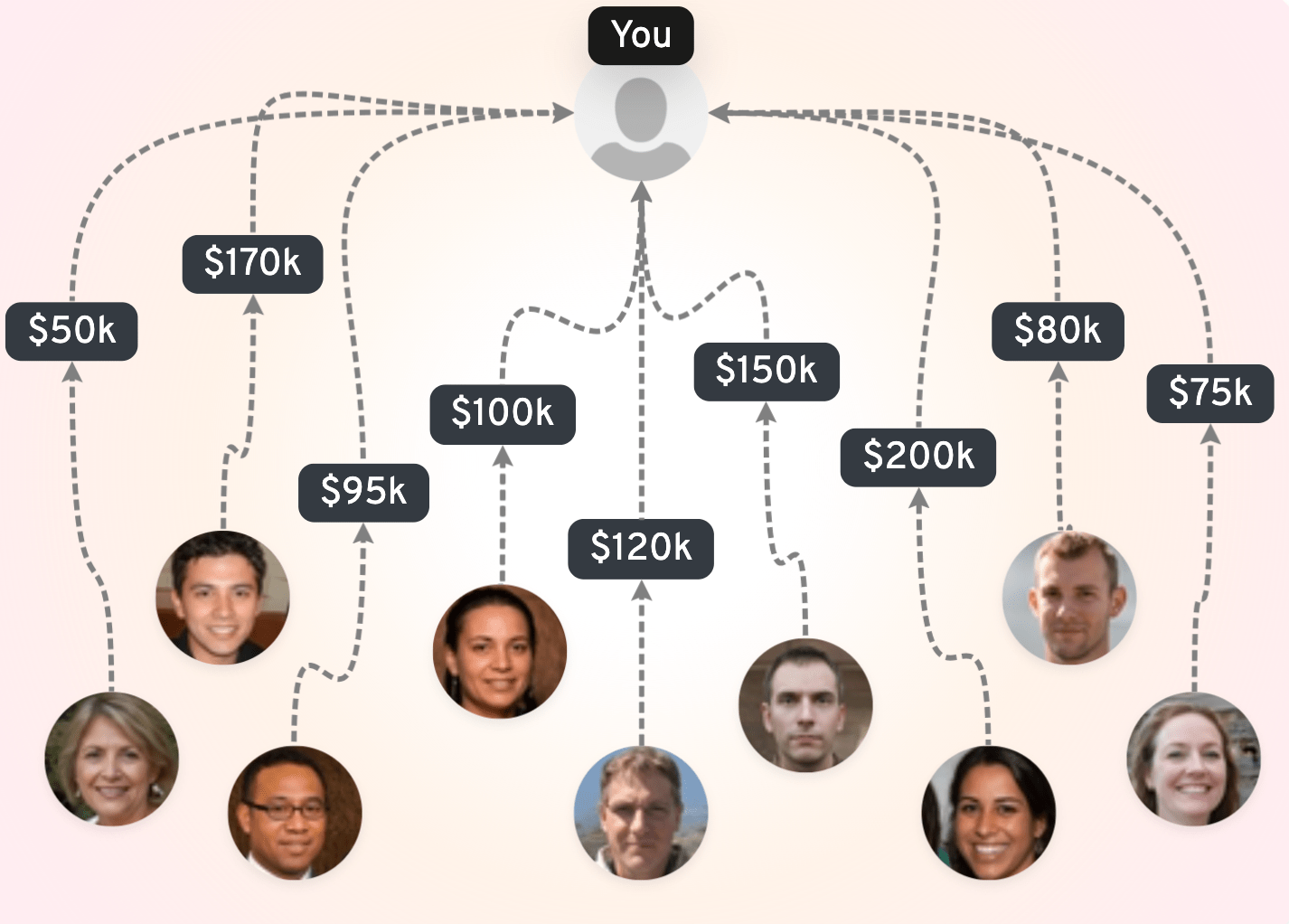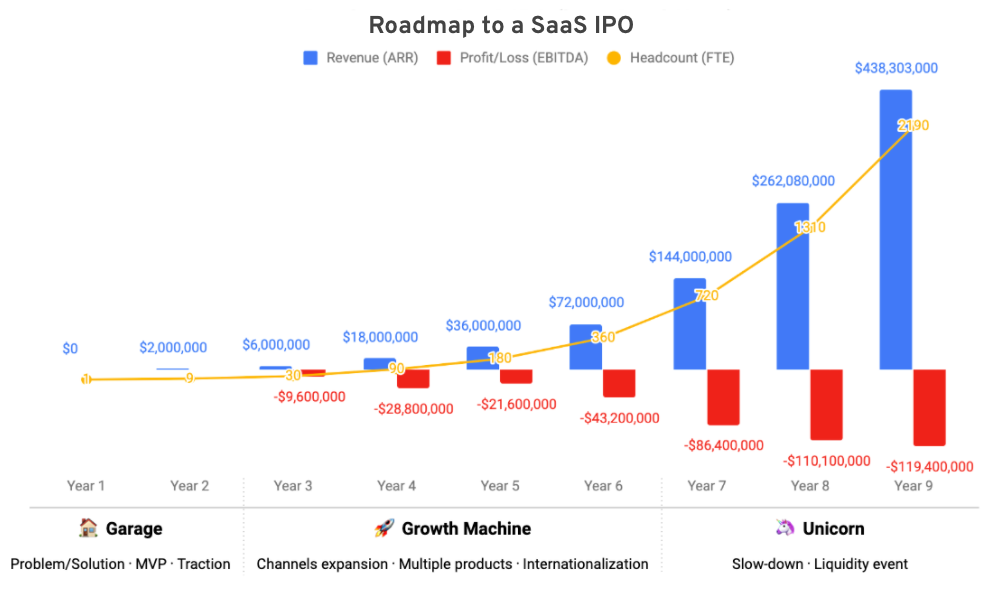In the race to launch and scale the next big SaaS startup, founders often skip the most important question. “How much should I charge my customers?”
On the flip side, customers always wonder if “is this worth the price I’m paying?”. Knowing how to properly price your product when it isn’t a physical item or a one time purchase can be tricky. We all know SaaS pricing can be hit or miss, and if you’re B2C your customers answer that question for you.
As a SaaS founder, coming up with a clear answer to this first question can seem almost impossible. Yet it is paramount for SaaS startup success.
Table of Contents
Why is Pricing and Packaging (Monetization) Important?
So why do we care about pricing and packaging? It seems like it just sounds like consulting mumbo jumbo, right?
Wrong. Pricing and packaging, otherwise known as the monetization model, are linked directly to your ability to compete in the marketplace against your competitors. Once you have a steady stream of customers, it’s one of the number one aspects of your business that affects your bottom line. A study by Price Intelligently, a SaaS pricing tool, supports this hypothesis where they found that it may actually have the biggest impact on revenue growth.
“Monetization has the most significant impact on the bottom line, leaving retention and acquisition far behind. According to one study, a 1% improvement in pricing results in a 12.7% profit increase. Acquisition and retention affect the bottom line not nearly as much.”
According to the same study, the SaaS community also de-emphasizes the monetization model in online blog discussions.
This is precisely what this article is going to delve into. We have coached dozens of companies to improve their pricing. Pricing matters. You may not even know that such low hanging fruit is there but we do. By examining the mistakes that founders make and offering a guide to follow, we hope that this article shines light on the key issues and allows you to find a pricing methodology that helps your firm grow and prosper.
First, what are the common pricing mistakes
1.1 Simply Copying a Competitor's Pricing
We have noticed a lot of the companies we have worked with set their pricing based on a competitor. It turns out that according to Forbes, the first thing every entrepreneur does when evaluating a startup idea is research the competition. Most entrepreneurs set their prices based on what competitors charge. After all, if it worked for a similar company and they are thriving,it may make sense to price your own SaaS offering at that tier. However, this is often an oversimplified approach that can either leave money on the table or lead to prospective buyers choosing to go with the competitor that they are already familiar with. Furthermore, this doesn’t factor in unique differentiators your company may have, future product releases, or what to do if your competitor changes their own pricing.
Despite all of this, many founders still use this practice, perhaps because they aren’t aware that there is a smarter way to price. Blindly copying your competitors pricing is like a bad game of telephone because the competitor you chose to price based off of may have based their own prices off another competitor. You may copy their pricing and they may copy yours like a game of Simon Says. This is nothing more than the blind leading the blind and is the basis for a whole host of pricing mistakes.
1.2 Thinking about Price without Positioning or Packaging
Another common mistake that SaaS startups make when pricing their product is thinking too much about the profit margin that will come from their product. As a result, they naturally think about the pricing FIRST. However, before they consider the actual price points, they need to figure out WHAT they’re selling. The packaging and what you get at each package tier needs to be sorted out first. Otherwise the equation is missing the most important variable: the customer and what the customer should be willing to pay. For SaaS startups packaging and positioning is even more important since that is a key factor in maximizing early revenue.
1.3 Making the plans overly complex
In our experience, SaaS companies can sometimes focus too much on making pricing plans customizable to the point where things become overly complex to the buyer. Complex pricing plans make it difficult for sales teams to effectively communicate value propositions and benefits to prospects. Instead of fostering clear conversations focused on the product's advantages, sales discussions might veer into explaining intricate pricing details. This absolutely frustrates potential customers and deters them from progressing further in the sales funnel. People have short attention spans, so the longer it takes to communicate something, the more likely it is that you’ll lose them.
Remember this: A confused mind doesn’t buy. When it doubt, KISS - Keep it Simple Stupid.
In order to keep you on the right track, consider these questions:
- Can you explain your pricing structure in less than 15-30 seconds?
- How long is the average sales / deal cycle?
- Are there massive jumps between plans/packages?
- Is the pricing structure working for you? (Win Rate, qualitative feedback, etc.)
So what do we do then, Mike?
The most effective way to create the right model is to start with a technique called “Value Based Pricing”. What this means is identifying the unique value propositions of your SaaS product offers via a collection and analyzing of different data points. Each data point has a goal, and involves going to different sources to derive the information. The right pricing model is usually a mix of internal reflection and clear communication to the customer on what problems you’re solving for them. Here are some of those data points and what they help you do:
2.1 Understand the customer needs and pain points
Through surveys, one-on-one interviews, and feedback from customer support, we can understand the nuanced intricacies of the needs of current and prospective customers. Customer feedback is exceptionally important because it allows you to learn about your product’s performance in real time. This may seem obvious to some, but to many this is a foundational step that is commonly left out.
2.2 Identify Key Value Drivers
With the first step complete we can now flag and highlight precisely the features that directly tackle the most pressing challenges that your audience faces. We want to highlight the features that transform workflows, cut costs, boost revenue, and most importantly save precious time.
2.3 Now we Quantify
We can now start to think about quantifying these features. HOW MUCH time does your product save? How much money? What’s the numeric increase in efficiency that you’re providing? At this stage, case studies and data visualizations are key to communicating this.
2.4 Sort your Customers
At this stage, we want to now think about the exact demographic makeup of your current customer base. Divide them into distinct groups and begin thinking about how your pricing plan will address each group’s distinct pain points and needs. What makes sense for a small business may not work for a large enterprise. This will help in figuring out which features to include at different tiers, if applicable. Additionally, depending on which target market you’re going after, this can give you a better idea on how to incentivize those target segments over others.
For a good example on how this impacts pricing, check out Slack’s pricing tiers (Figure 2). Notice how Slack is clearly defining SMB, Mid-Market, and Enterprise buckets.
2.5 NOW, we look at your competitors' pricing
Time to spy on your rivals. If possible, look at your rival’s pricing models to see what works and what doesn’t. Most companies will at least have the packaging tiers available. In some cases, you can use the Wayback Machine to learn how the company’s pricing model has changed over time. This will give you insight as to what pricing strategy the company is implementing and how you can stick out. It’s common for pricing to change frequently, or not even be public, in the SaaS industry. To get around this obstacle there are tools available for you to derive some insights.
One tool is the Wayback Machine. This is a tool that archives web pages over time going back decades. If the company you’re looking at has recently changed their pricing, or just went dark on providing public pricing, there’s a decent chance that you can view that change on the Wayback Machine.
Below is an example of this: Sumsub, an ID verification platform, has public pricing for their “Growing” packages, but how has this pricing changed over time? In Figure 3 below, we can see that Sumsub provides public pricing (pricing as of August 31, 2023). If we use the Wayback Machine with the URL from their pricing page , we can see that their pricing has changed substantially since March 2022 (Figure 4). This gives us key data when evaluating how the company is conducting their GTM strategy.
2.6 Determine the Pricing Model
At this point in the process, one should start thinking about the pricing model itself. There are many options, but we’ve listed a few of the most common below to help you get started:
- Cost-Plus Pricing: This formula involves adding a markup to your production or service costs. It's straightforward and provides a baseline for covering expenses and generating profit.
- Tiered Pricing: Tailor your pricing tiers based on different customer segments' willingness to pay. This formula allows you to capture value from diverse customer groups effectively.
- Per-User or Per-Feature Pricing: If your SaaS offers a range of features, you can charge customers based on the number of users or the features they need. This allows you to align pricing with usage and value received.
- Value Metric-Based Pricing: This formula ties pricing to a specific metric that correlates with the value your SaaS provides. For instance, you might charge based on the number of leads generated or transactions processed.
- Dynamic Pricing: Adjust pricing dynamically based on demand, usage, or other factors. This can maximize revenue during peak periods and encourage usage during off-peak times.
- Subscription-based Pricing: Charge customers a recurring fee for access to your SaaS product. This model creates a steady stream of revenue while customers benefit from continuous value.
The chosen formula should reflect your understanding of customer preferences, competitive landscape, and the value your SaaS solution brings. Therefore, it's essential to complete the entire value-based pricing exercise before finalizing the pricing formula to ensure the alignment of your pricing strategy with the insights you've gathered.
2.7 Conduct an Impact Analysis on Pricing
Pricing changes can have far-reaching consequences. Conducting an impact analysis assesses how adjustments in pricing could affect various aspects of your business, such as revenue, customer acquisition, churn rates, and overall profitability. This analysis aids in making informed decisions and forecasting the potential outcomes of your pricing strategy.
2.8 Train your Sales Team on Pricing
Once you’ve tested and settled on a final pricing and packaging model, you need to properly train your sales team so they can communicate the value effectively. Remember, a confused mind doesn’t buy. If your sales team doesn’t understand how to convey the value in your new model, then your prospects aren’t going to understand either, which defeats the entire exercise we just went through. According to G2, some of the biggest problems in B2B SaaS sales can be solved by clear and concise communication on the offerings (See Figure 5).
Conclusion
Pricing your SaaS offering can be difficult but by having a recipe for success, you can give yourself an edge and provide your customers with pricing that is both affordable and makes a profit. Don’t copy what everyone else is doing. Create your own unique offering and a pricing recipe based off of YOUR value, which will allow you to scale up and find SaaS success.
About the author
Michael Mills is the founder and CEO of Infinitary Advisors, a SaaS consulting firm where he leads comprehensive competitive analysis and monetization consulting for both startups and scaleups. Additionally, he is the CEO and founding partner of Infinitary Fund, which originated in his dorm room while at the University of Massachusetts. Infinitary Fund is a quantitative fund focused on S&P 500 equities which relies on a proprietary mathematical formula for success. A generalist at heart, he holds a degree in economics and political science. Outside of his entrepreneurial endeavors, he is a voracious reader and a dedicated family man.
Find your ideal investors now 🚀
Browse 5,000+ investors, share your pitch deck, and manage replies - all for free.
Get Started









